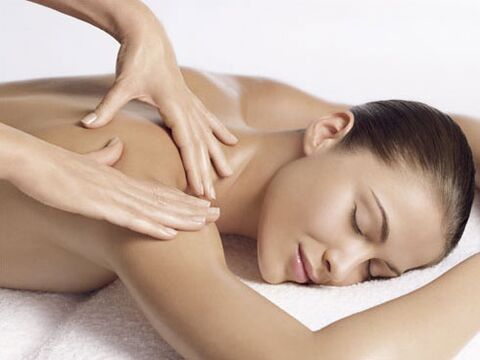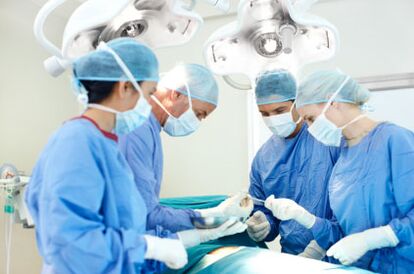Unlike animals, humans move on two legs with a straight back. In this regard, the main center of gravity is shifted in such a way that the greatest load is shifted to the lumbar spine. Other factors that increase the load are obesity, weight lifting and flat feet. At the same time, the annulus fibrosus of the intervertebral disc thins over time, leading to the formation of protrusions and hernias. The vertebrae themselves have an irregular shape due to the formation of growths (osteophytes). It is this process that sooner or later leads to the development of lumbar osteochondrosis.
Symptoms and Diagnosis
To understand how to cure lumbar osteochondrosis, it is necessary to find out all the causes of its appearance and determine the degree of damage to the surrounding tissue. Diagnosis of the disease is based on examination, collection of historical data on clinical manifestations (manifestations and symptoms), and instrumental methods.
Clinical manifestations of lumbar osteochondrosis include the following symptoms:
- Pain in the lower back, legs, and buttocks on the side of the lesion;
- Sensory disturbances (anaesthesia, paresthesia);
- Decreased lower extremity motor activity;
- Process involved in pelvic organ dysfunction (urinary incontinence, impotence).
Symptoms usually increase gradually with the progression of pathological changes. Based on these findings, doctors can only suspect lumbar osteochondrosis. A final diagnosis can only be made after examination and multiple studies.
Upon inspection, a competent expert will surely check for the presence of many characteristic reflections:
- Pulling the heat reflex, the doctor lifts the patient's straight leg, and the pain intensifies. The pain disappeared immediately after the knee flexed the limb.
- Bekhterev's reflex includes pain when pressing a straight knee against a flat surface.
The instrumental approach can obtain additional information about the state of the spinal cord and nerve tissue in the roots located near the spinal cord lesion. X-rays and magnetic resonance imaging, and sometimes computed tomography, are usually done.
After establishing the fact that there is a disease, it is necessary to decide how to treat osteochondrosis of the lumbar spine. To do this, there are many possibilities, from taking the medicine to the end of the surgery. In some cases, reflexology and massage can help.
medical treatement
Medical treatment of osteochondrosis of the lumbar spine is aimed at eliminating its manifestations. To reduce the severity of pain and reduce inflammation, use:
- Non-steroidal anti-inflammatory drugs. By reducing inflammatory manifestations and blocking pain receptors, pain associated with nerve root irritation is reduced when these drugs are taken. These medicines are available in various dosage forms (injections, tablets, ointments, and gels).
- Glucocorticoids are used when pain relievers are ineffective. They are stronger by reducing the swelling of nerve tissue, and as a result, they reduce the stimulating effect of bone growth on the roots. However, due to possible systemic effects and side effects, long-term use is not recommended.
In order to protect cartilage tissue from further destruction, drugs for the treatment of lumbar osteochondrosis must include chondroprotective agents. And, although their effectiveness has not been proven, this group of drugs is widely used to treat the disease.
To reduce the manifestations of mental disorders (depression, neurosis) that often accompany this disease, sedative drugs are prescribed for osteochondrosis of the lumbar spine. They help patients cope with pain. With a marked decline in mood, use an antidepressant.
In addition, it is necessary to treat lumbar osteochondrosis with vitamin preparations, as they help reduce the negative effects on the spinal cord and its roots. Groups B and C drugs are usually prescribed because they are the ones that protect nerve tissue the most.
Physical Therapy Program
Treatment of lumbar osteochondrosis beyond the exacerbation stage should be supplemented by an effective physical therapy program. Most of the time, various effects are used on the reflex points responsible for blood supply and nutrition to the affected area. These areas may be affected by the following factors:
- magnetic therapy;
- acupuncture;
- Electroacupuncture;
- burning with cold or heat;
- The application or administration of drugs (medicinal moxibustion).
Using drug puncture, by injecting the solution directly into the altered area, the concentration of the drug can be significantly reduced, eliminating most of the unwanted side effects. Using these additional methods can improve the effectiveness of medications for lumbar osteochondrosis.
manual therapy

Manual therapy or massage necessarily includes the treatment of lumbar osteochondrosis in the complex.
Physicians may set themselves some tasks, depending on the individual patient:
- Relax tense back muscles by stroking and vibrating;
- Improve waist blood circulation;
- Strengthen the muscle frame with deep kneading;
- Return the displaced vertebra to its original position.
An individualized approach enables you to develop the best strategy and determine how to treat lumbar osteochondrosis with maximum efficiency.
physiotherapy
Sometimes, patients have not seen a doctor recently and begin to ask friends how to treat osteochondrosis of the lumbar spine. In this case, the safest thing to do is to use a gymnastics complex, which is specially designed to strengthen the lower back.
It should be remembered that during exacerbations you cannot perform any load except breathing exercises and relaxation. In the future, you can add other exercises designed to strengthen your press and back muscles (push-ups, leg swings, etc. ). At the same time, it is important not to make large sudden movements, as the fragile vertebrae can simply move. In this regard, it is very desirable to start classes with a doctor's guidance and then continue at home on your own.
Ethnoscience
Folk remedies for lumbar osteochondrosis should be used in addition to the main treatment, but not in place of it. Since any intervention can harm the patient, it is necessary to first coordinate all your actions and use of alternative methods with your doctor.
Typically, various plant-based products are used for this:
- To prepare a topical irritant ointment to improve blood supply to the affected area, you will need five red pepper fruits and 100 ml of kerosene and vegetable oil. After receiving the infusion, it is necessary to lubricate the painful area at night. Apply a dry wool compress over the top.
- Mix butter and hop cones in equal parts. Apply the resulting ointment to the waist area as needed.
- Arnica, walnuts and medicine books should be taken after each meal, a spoonful.
Treatment of lumbar osteochondrosis with folk remedies may be effective in the early stages of treatment. Therefore, it is necessary to start treatment as soon as symptoms appear.
operation treatment

Surgical treatment of lumbosacral osteochondrosis is rarely performed, and only if other methods have not had a significant effect within six months. Other indications for surgery include cauda equina syndrome and acute nerve root compression through the spinal canal in this region.
The most common type of surgery is to remove a damaged disc (discectomy). During surgery, the doctor removes the interfering parts of the vertebrae and discs and, if possible, fixes the spine in the correct position.
In this case, the surgery is considered the most effective method, but at the same time, it is only prescribed if other treatments have not produced results within six months. In addition, microsurgery and endoscopic methods of treating the spine are common.
Since interventions on the structures of the spine can lead to very serious consequences (paralysis, complete paralysis), the treatment of osteochondrosis of the lumbar spine can only be carried out in certified neurosurgery clinics.
How to treat aggravated lumbar osteochondrosis
Treatment of worsening lumbar osteochondrosis, usually with medication. However, to eliminate severe symptoms, medical intervention is necessary. To eliminate acute pain, a so-called blockade can be performed. To do this, an anesthetic is used, which is injected directly into the affected area with a special needle.
Muscle relaxants are used to relax spastic back muscles during exacerbations of the disease. These drugs block neuromuscular conduction, helping to relax the muscles and remove the "interference. "
If the patient is in severe pain, it may be necessary to inject anesthesia into a vein or muscle. Sometimes this is enough to relieve the condition.
prevent disease
In order not to doubt how to cure lumbar osteochondrosis, the best option is to prevent this disease. Basic rules to help with this include:
- Do not force the position for more than half an hour, try to warm up as much as possible, and change positions if possible;
- Don't lift heavy objects, coordinate all loads with your trainer when working out in the gym;
- Do not lie in a crib or hammock, preferably on a hard bed to prevent deflection and displacement of the vertebrae;
- Wear comfortable shoes with a small heel (less than 4 cm);
- avoid gaining weight;
- Replace bags with backpacks to distribute the load evenly;
- Swim in a pool or pond to give your lower back a break.
By following these simple tips, you may never think about how to get rid of lumbar osteochondrosis. If the disease still develops, it is time to consult a doctor. With the help of complex therapeutic effects, in most cases, it is possible to eliminate the symptoms of this pathology and continue to live a normal life.


















